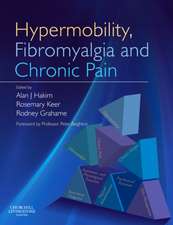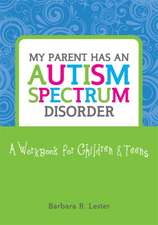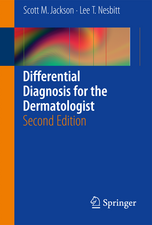Pathophysiology of Headaches: From Molecule to Man: Headache
Editat de Messoud Ashina, Pierangelo Geppettien Limba Engleză Hardback – 23 apr 2015
Din seria Headache
- 5%
 Preț: 368.37 lei
Preț: 368.37 lei - 5%
 Preț: 654.11 lei
Preț: 654.11 lei - 5%
 Preț: 717.20 lei
Preț: 717.20 lei - 5%
 Preț: 508.16 lei
Preț: 508.16 lei - 5%
 Preț: 1037.21 lei
Preț: 1037.21 lei - 5%
 Preț: 1037.21 lei
Preț: 1037.21 lei - 5%
 Preț: 784.75 lei
Preț: 784.75 lei - 5%
 Preț: 663.21 lei
Preț: 663.21 lei - 5%
 Preț: 661.66 lei
Preț: 661.66 lei - 5%
 Preț: 784.38 lei
Preț: 784.38 lei - 5%
 Preț: 836.12 lei
Preț: 836.12 lei - 5%
 Preț: 382.63 lei
Preț: 382.63 lei - 5%
 Preț: 559.97 lei
Preț: 559.97 lei - 5%
 Preț: 659.60 lei
Preț: 659.60 lei - 5%
 Preț: 723.40 lei
Preț: 723.40 lei
Preț: 722.12 lei
Preț vechi: 760.13 lei
-5% Nou
138.19€ • 143.40$ • 115.51£
Carte tipărită la comandă
Livrare economică 15-29 martie
Specificații
ISBN-10: 3319156209
Pagini: 300
Ilustrații: X, 272 p. 10 illus., 8 illus. in color.
Dimensiuni: 155 x 235 x 18 mm
Greutate: 0.58 kg
Ediția:2015
Editura: Springer International Publishing
Colecția Springer
Seria Headache
Locul publicării:Cham, Switzerland
Public țintă
Professional/practitionerCuprins
1 Anatomy of headache.- 2 Animal models of migraine.- 3 Animal models of other primary headaches.- 4 Genetics of headache.- 5 Human models of primary headaches.- 6 Imaging of migraine.- 7 Imaging of other primary headaches.- 8 Neurophysiology of migraine.- 9 Neurophysiology of other primary headaches.- 10 Biochemistry of primary headaches.- 11 Pathophysiology of migraine: current status and future directions.- 12 Pathophysiology of TTH: current status and future directions.- 13 Pathophysiology of cluster headache: current status and future directions.- 14 Pathophysiology of MOH: current status and future directions.
Recenzii
Textul de pe ultima copertă
This book provides a detailed overview of the current state of knowledge regarding the pathophysiology of both primary headaches – migraine, tension-type headache (TTH), and cluster headache – and the very important and frequent type of secondary headache, medication overuse headache (MOH). After an introductory chapter describing relevant neuroanatomy and vascular anatomy, the evidence gained from animal models regarding the pathophysiology of migraine and the other primary headaches is reviewed. Knowledge of the genetic component in the different types of headache is then examined with reference to recent evidence, for example regarding the implication of the trigeminovascular system and cortical spreading depression in migraine. Detailed information is provided on insights into primary headaches from imaging studies, including functional magnetic resonance imaging and positron emission tomography and on their neurophysiology and biochemistry. A further series of important chapters describe present knowledge of the pathophysiology of each specific type of headache and consider future directions. Written by acknowledged experts in their fields from Europe and the United States, clinicians and students will find Pathophysiology of Headaches to be an excellent source of up-to-date information on why patients experience headaches. In addition, it will be of value for pain researchers investigating the underlying mechanisms of headache.
Caracteristici
Reviews recent advances in the neurobiology of headaches
Examines the latest evidence on the role of the genetic component
Descriere
This book provides a detailed overview of the current state of knowledge regarding the pathophysiology of both primary headaches – migraine, tension-type headache (TTH), and cluster headache – and the very important and frequent type of secondary headache, medication overuse headache (MOH). After an introductory chapter describing relevant neuroanatomy and vascular anatomy, the evidence gained from animal models regarding the pathophysiology of migraine and the other primary headaches is reviewed. Knowledge of the genetic component in the different types of headache is then examined with reference to recent evidence, for example regarding the implication of the trigeminovascular system and cortical spreading depression in migraine. Detailed information is provided on insights into primary headaches from imaging studies, including functional magnetic resonance imaging and positron emission tomography and on their neurophysiology and biochemistry. A further series of important chapters describe present knowledge of the pathophysiology of each specific type of headache and consider future directions. Written by acknowledged experts in their fields from Europe and the United States, clinicians and students will find Pathophysiology of Headaches to be an excellent source of up-to-date information on why patients experience headaches. In addition, it will be of value for pain researchers investigating the underlying mechanisms of headache.







